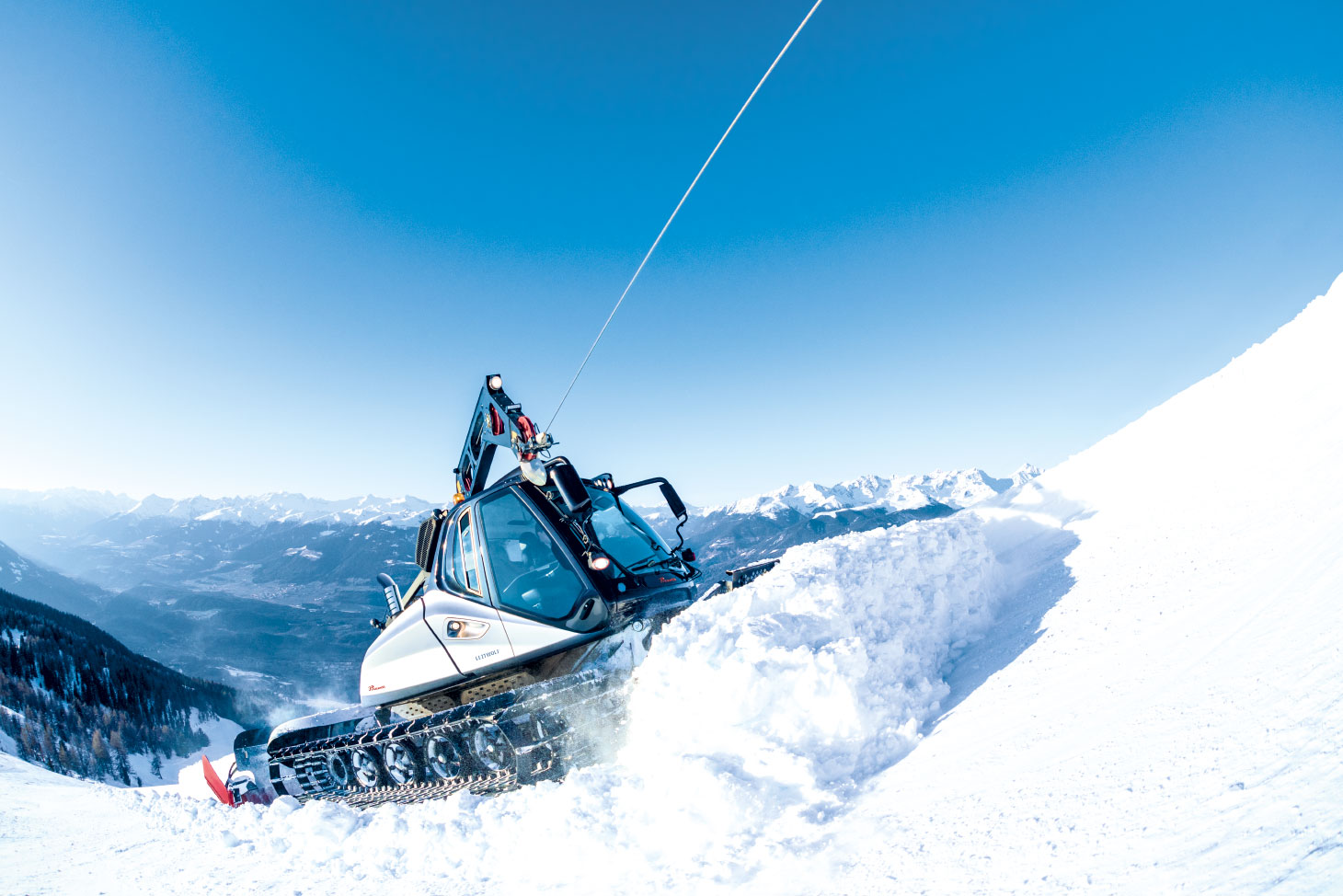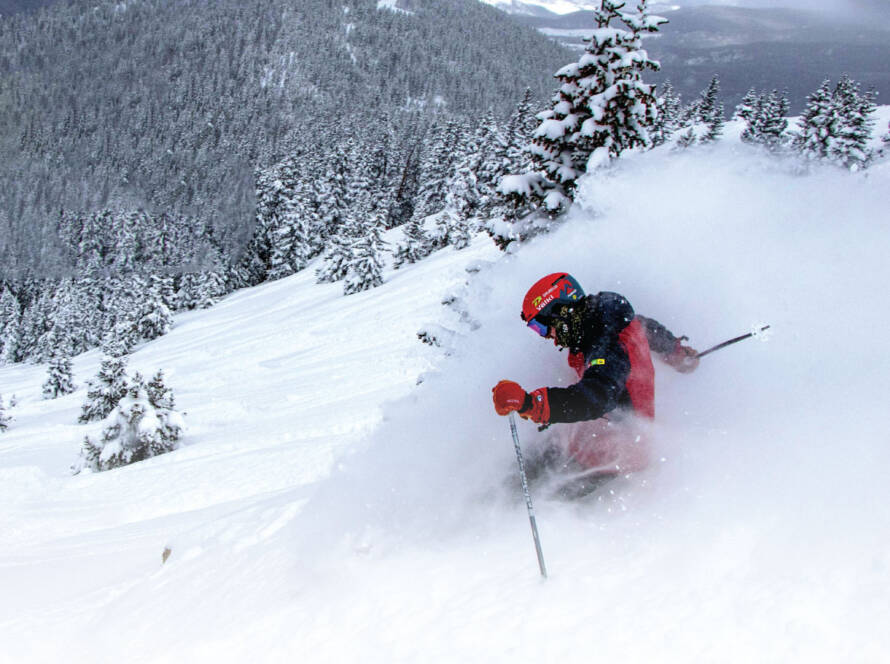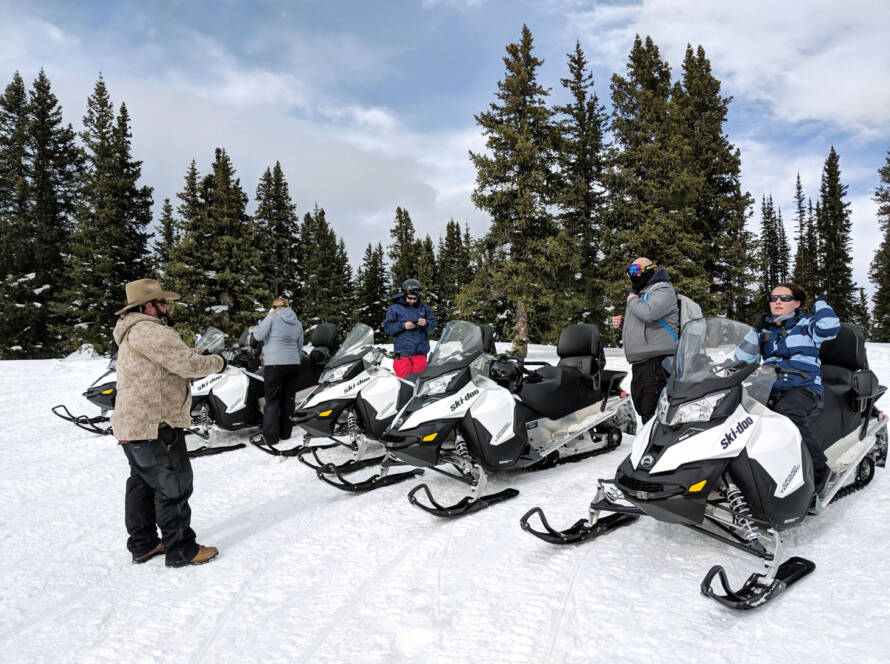Snow grooming operators count on their vehicles to perform well in all kinds of weather and over the most challenging terrain. Therefore, it’s critical that the machines and all component parts are properly maintained and serviced. The winches used to help snow groomers create superlative trails and downhill ski runs are no exception.
Prinoth groomer winches
“If a winch is not properly maintained and serviced, over time, you will lose performance. It won’t pull as hard and give you that support you need,” said Alex Wood, field applications engineer at Prinoth.
That support is particularly important when grooming steep slopes for alpine skiing. Of the three winch models used by Prinoth snow groomers for this purpose, the newest and most advanced is the AUTOMATIC Winch. The winch, which features precise computer control and a pulling force of 4.5 tons, can be found on Prinoth’s LEITWOLF/LEITWOLF X and BISON/BISON X models.
Wood says two very important things to keep in mind for Automatic Winches are ensuring the gearbox oil is changed at the correct intervals and all lubrication points on the winch are regularly greased.
Here’s a list of some of the important recommended intervals for maintenance of the Automatic Winch.
| Prinoth AUTOMATIC Winches | Frequency |
|---|---|
| Check cable for damage | Every 100 hours |
| Check level of winch gear oil | Every 50 hours |
| Change winch gear oil | Every 100 hours |
| Lubricate cable guide rollers | Every 50 hours |
| Lubricate bearings and other lubrication points | Every 50 hours |
| Check bearings for noise | Every 100 hours |
| Replace hydraulic fuel filter | Every 800 hours |
| Check bolts and hose clamps and tighten if necessary | Every 400 hours |
Wood says snow groomer operators also need to keep a close eye on the cable, regardless of what type of winch they’re using.
“When you go to hook on the cable, you should be always aware and looking for damage,” he said. “The biggest thing to look for is broken strands. Some of the small strands will start breaking over time just through wear. You want to catch that before too many break.”
Wood says if operators notice any issues with an Automatic Winch or any other part of the snow groomer while out grooming, they should always make a note that they can pass onto a mechanic to have it checked.
PistenBully groomer winches
Rod Elwell, national service manager for PistenBully USA, believes the task of maintaining snow groomer winches is easier than it used to be.
“Winches have just come so far over the years. They’re more reliable now than they ever were, but there’s still some critical maintenance needed, especially cable inspections and things like that, to keep them operating at the top of their game,” said Elwell. “The winch is going to last as long as any snowcat that it’s mounted on, as long as you do the proper maintenance and everything.”
“If a winch is not properly maintained and serviced, over time, you will lose performance. It won’t pull as hard and give you that support you need.”
Alex Wood, PRINOTH
The PistenBully 400W and PistenBully 600W are winch cats equipped with capstan winches to assist with alpine snow grooming. Elwell says because of the way these winches operate, it’s essential that the gears are lubricated at the correct maintenance intervals.
“There is a big ring gear at the bottom of the winch and a big bearing that the whole winch rotates around on. It supports quite a bit of weight, so you need to keep this bearing greased properly,” he said.
Elwell says other key aspects of a winch maintenance program for PistenBully winch cats is to grease the lubrication points for the cable guide rollers daily and ensure the gearbox oil is changed regularly.
Here’s a list of some of the important recommended maintenance intervals for PistenBully 400W and 600W winches.
| PistenBully 400W and 600W Winches | Frequency |
|---|---|
| Check cable for damage | Every 50 hours |
| Change winch gear oil (PB 400W) | Every 800 hours |
| Change winch gear oil (PB 600W) | Every 600 hours |
| Lubricate cable guide rollers | Daily |
| Lubricate turret gear drive | Every 100 hours |
| Apply spray grease to crown gear | Every 100 hours |
Elwell says the best way to inspect the winch cable is to extend it out its entire length and either walk the line in or bring it back in slowly, keeping an eye out for damaged strands and snags or kinks that could loosen the cable. He recommends wearing cotton gloves while doing this as it will help in detecting little broken wires that are hard to spot.
Tucker Sno-cat winches
Unlike some Prinoth and PistenBully snow groomers, Tucker Sno-cats don’t have built-in winch-assist systems for grooming steep slopes. However, the company will install smaller winches for customers who request them.
Dan Dressler, a factory sales representative at Tucker, says for the most part, they are electric winches manufactured by Warn Industries that are typically found mounted on a pickup truck or offroad vehicle. He says they are often used to help clear away obstacles during trail grooming by a Tucker Sno-Cat.
Warn Industries maintains its winches are essentially maintenance free, although the company does recommend that users inspect the winch line after every use and at regular intervals to ensure there are no issues with the cable, which can be either wire or synthetic fiber.
“If it’s a wire rope, you’re looking for things that will weaken the strength of that cable, like broken wires or flat areas, twists or kinks in the cable,” said Dressler. “Fiber rope in the last 25 years has come a long way. It is comparable in strength [to wire] and it bends easily, which is great, but it can also be damaged more easily. So there, you’re looking for a cut or nicks in that cord.”
Dressler says pulling the entire winch line out and having a really good look at the cable is something he’d recommend doing at least two or three times during the snow grooming season.
“This gives you a chance to look at everything because if you’re using it lot, you’re probably going to find problems. And it’s not that big of an expense just to replace the cable.”


